January 13, 2024
Hill Country Habitat Romance
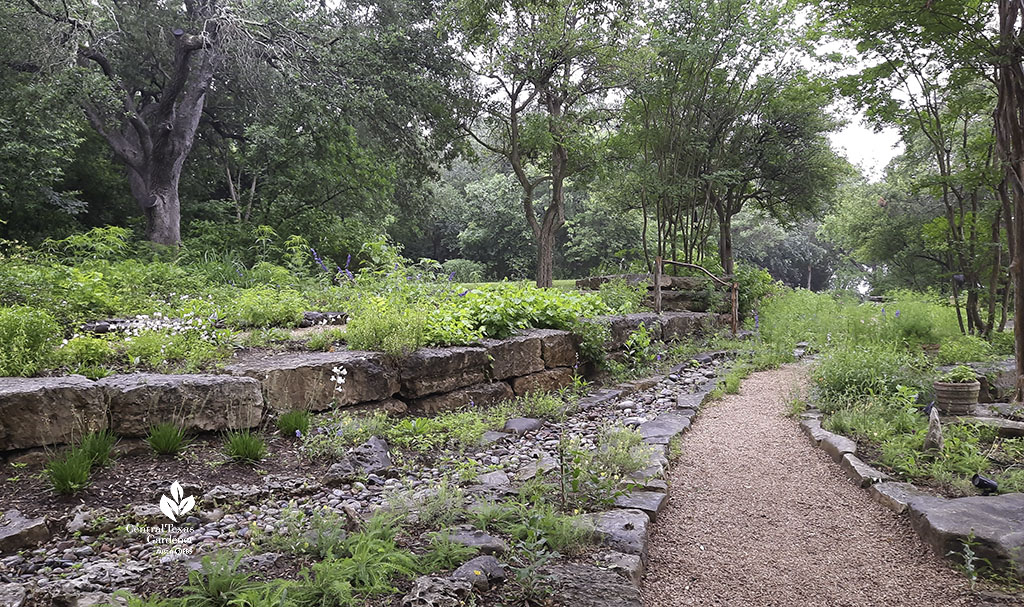
“In the dead of winter, when a lot of the plants have died back, I can see the stones,” James Truchard told us on our visit in April 2023.
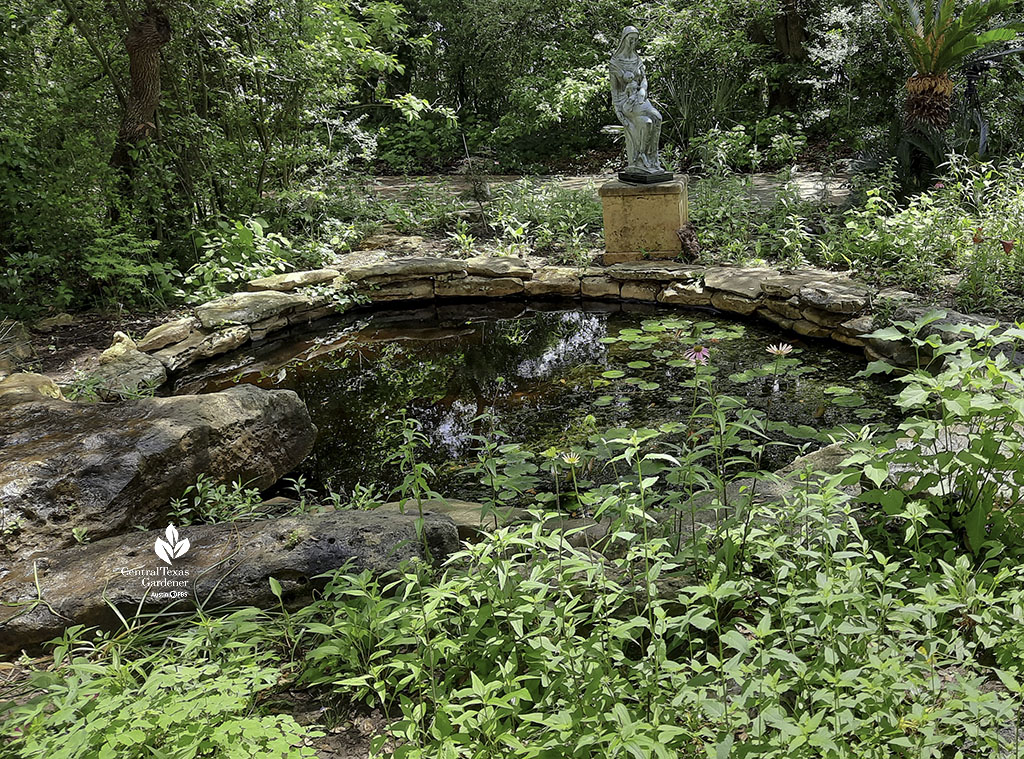
“So, the stones are always there and they’re always beautiful. It makes winter a better time of year than it would be otherwise because the stones don’t mind the cold.”
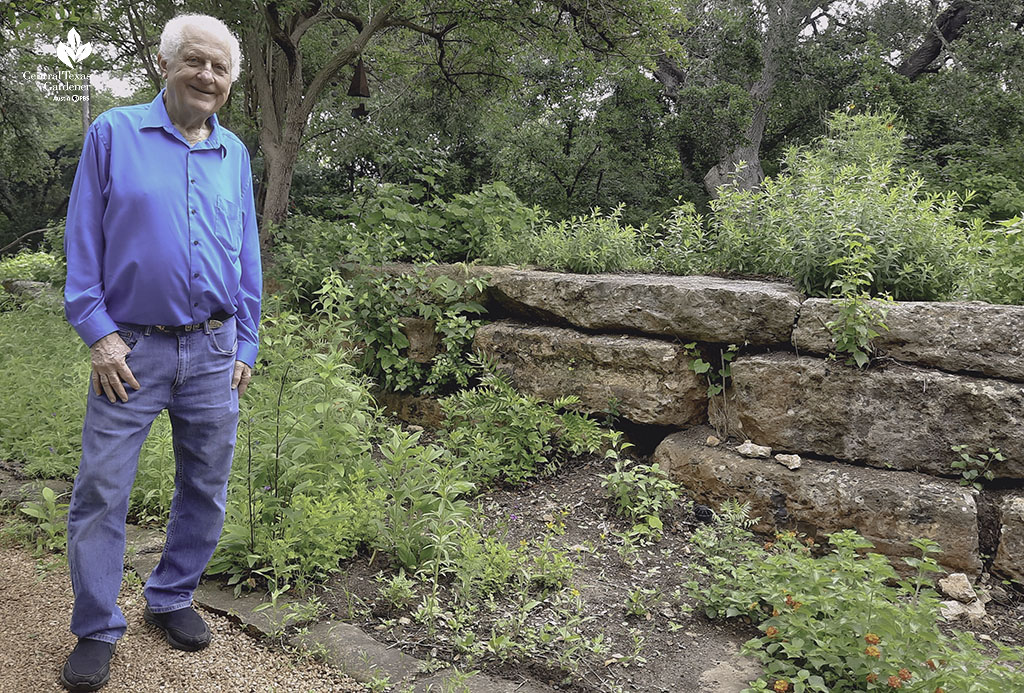
They certainly charmed us as we tramped up and down winding paths, scrambling to keep up with enthusiastic James as he pointed out layer upon layer of native plants, some emerging against waning spring early birds and others in full swing.
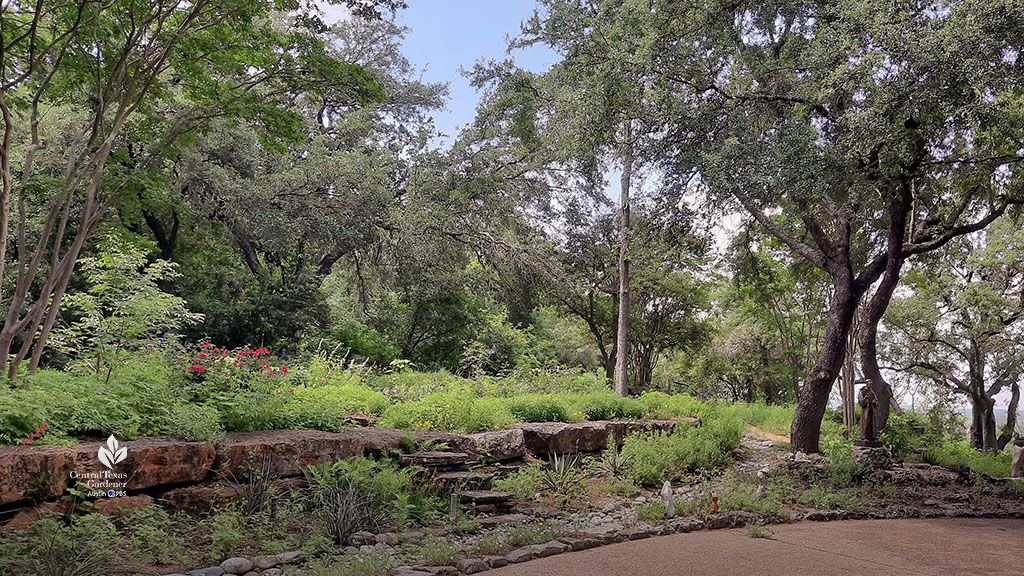
He truly loves the land, and since 1995 when he bought this lot, he’s restored native plant diversity from bare rock and a few live oak trees. Climate challenges have led his vision and respect for Hill Country resources.
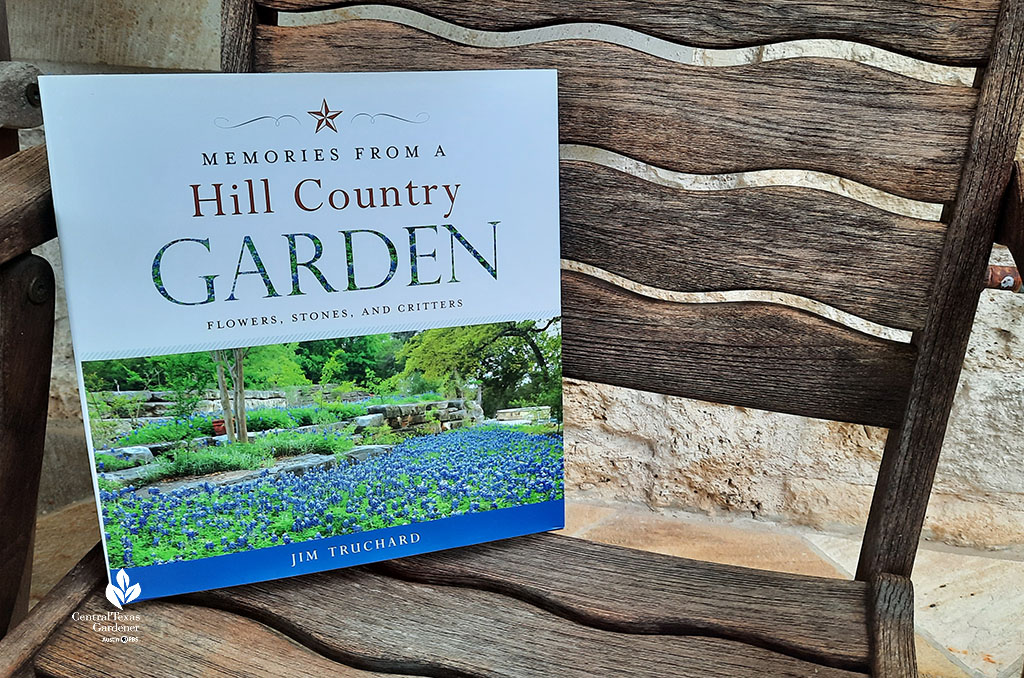
He documented his conversation with the land in Memories from a Hill Country Garden—Flowers, Stones, and Critters, dedicated to his first wife Lee who passed away in 2012. Both a poignant and witty chronicle, it’s also a guide to Texas tough bloomers in all four seasons.
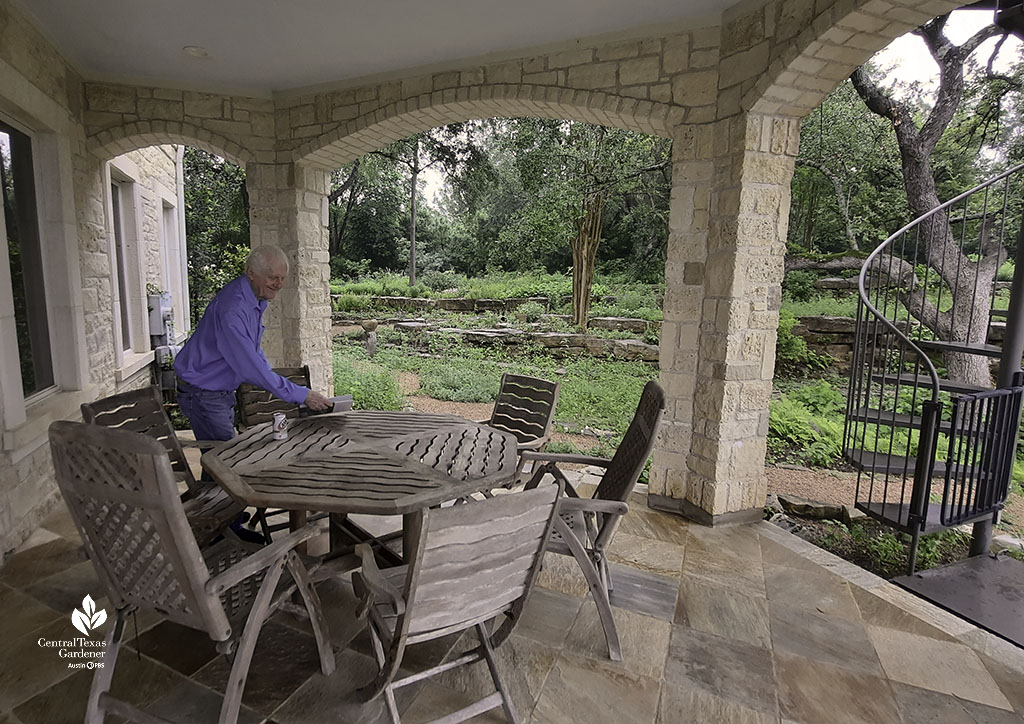
James and the garden have shared hard freezes, ice storms, blustery winds and drought. Plants soar and others fail. “Growing up on the farm, I think is a good lesson about how to deal with setbacks and in business as well. So, on the farm you get adverse weather conditions and the crop may fail. Or you planted too early and you have to replant. These are the kind of lessons that help you in business to be adaptable to adverse things and take them in stride.”
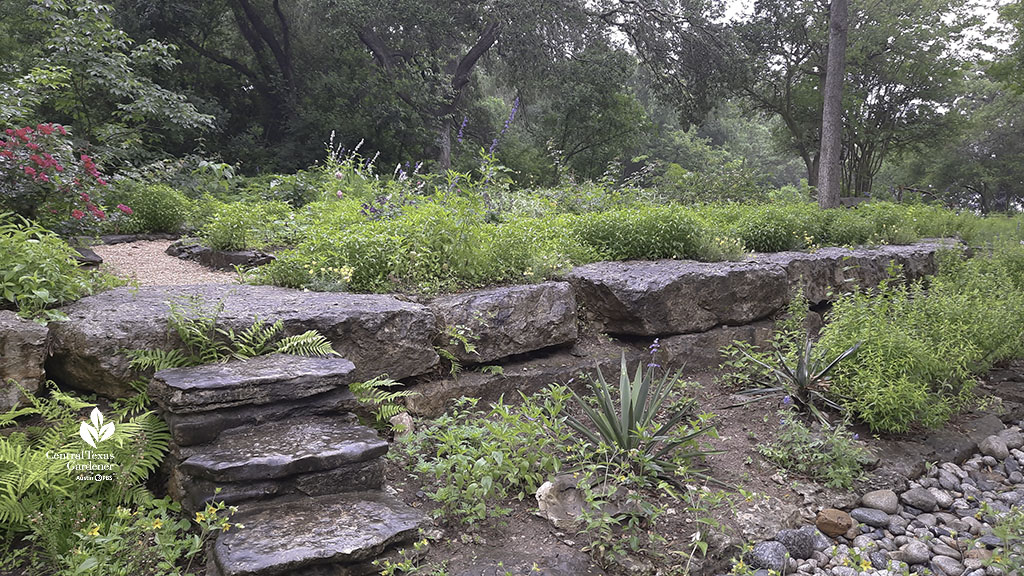
Gradually, James shaped a sanctuary for family and generations of wildlife as he layered tiers of retaining walls. “I also love the rocks, the natural stone; like Willie Nelson would say ‘Old folk, Fords and natural stone.’ So I’ve used stones generously around the property to make trails to build retaining walls, to give the character I like and the feel of the Hill Country,” he said.
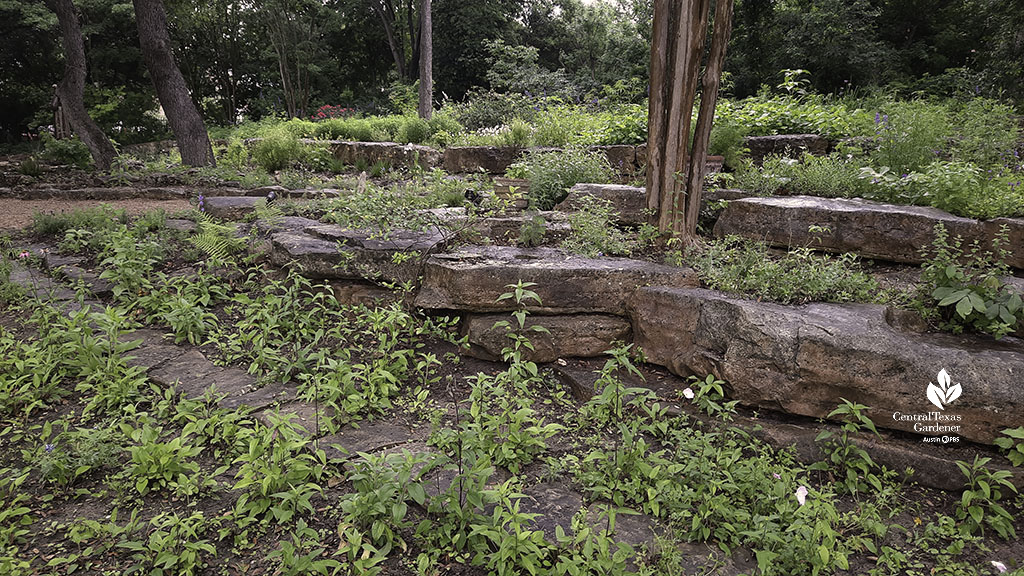
He backfilled with soil and compost (these days, they make their own). Rock squirrels love the walls to build their homes, and in return, assist him with planting. “Over the years I have a combination of plants finding their own spot and me learning where to plant them,” he said.
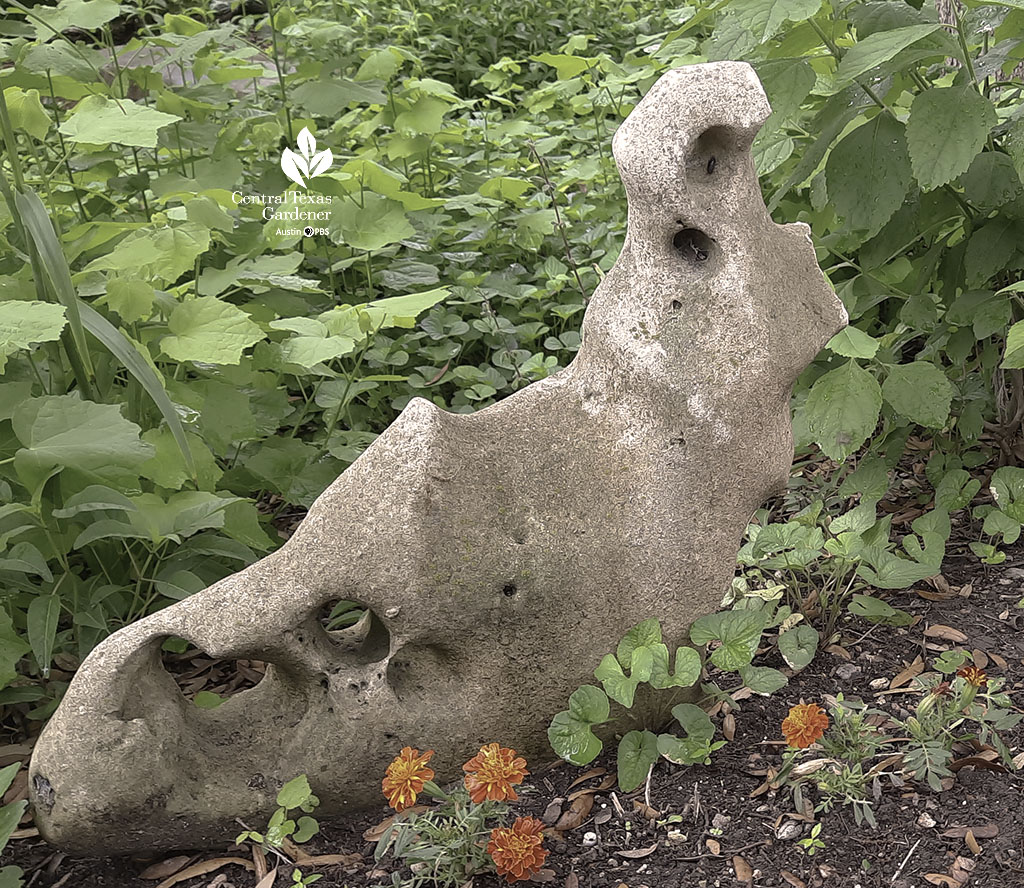
Sometimes excavations hit the jackpot with natural stone sculptures. I see a different critter every time I see this picture!
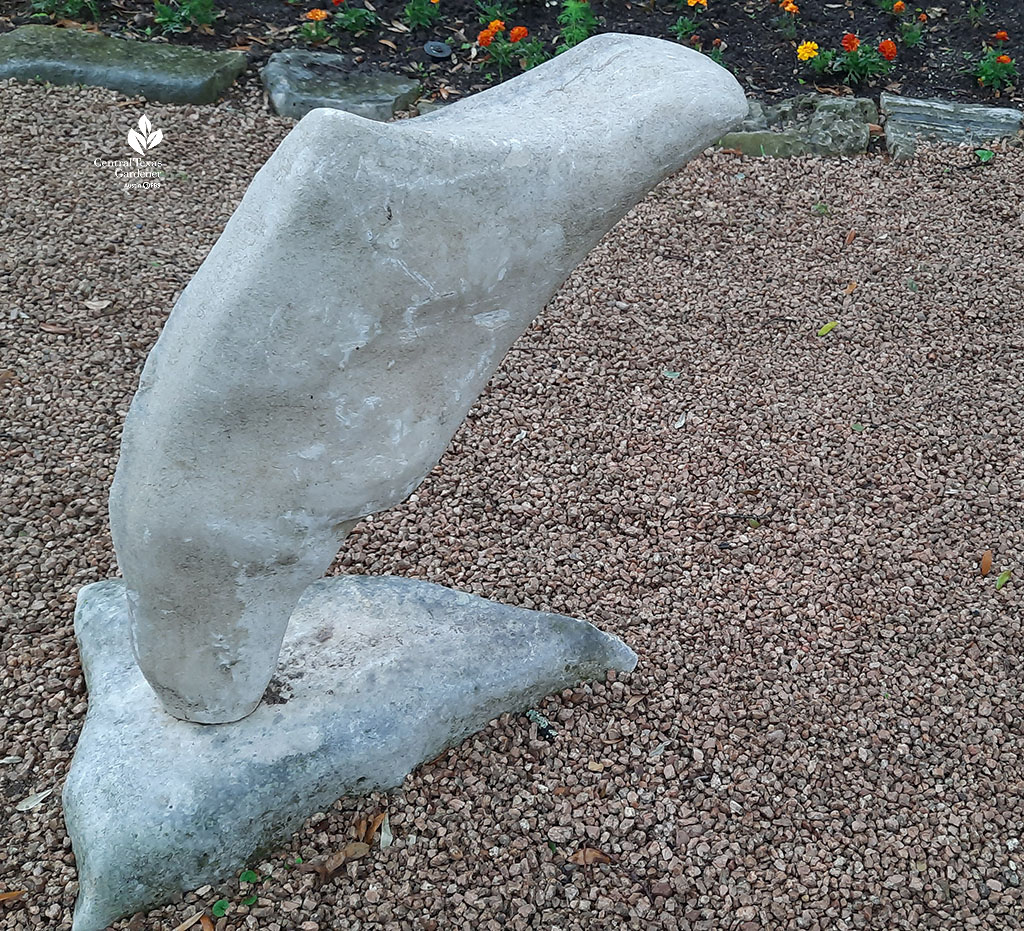
This dolphin leaps from rock, cleverly mounted by craftsman David Stalker (who we met at John and Jane Dromgoole’s garden).
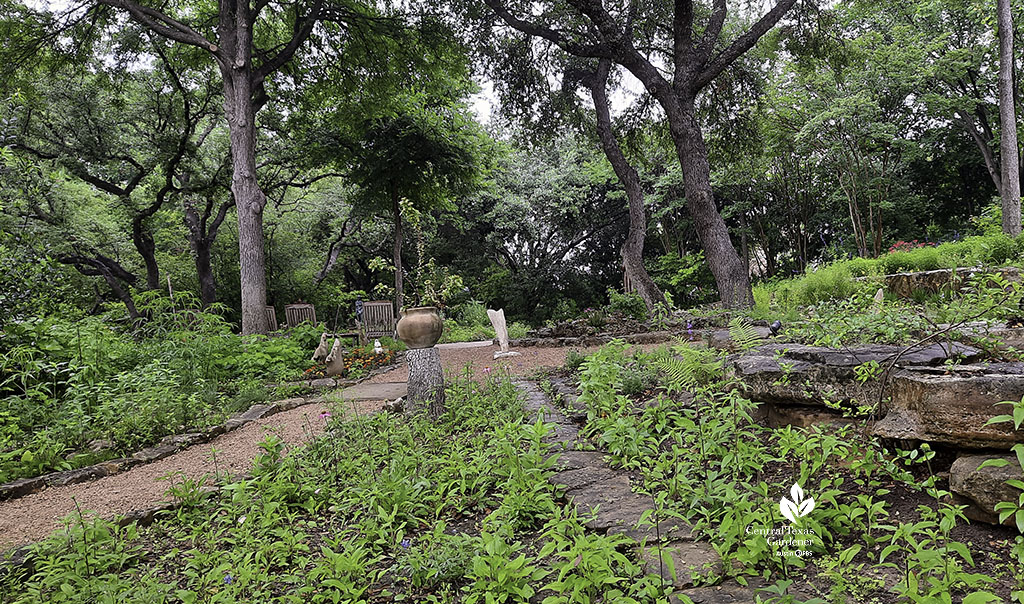
Positioning garden art just right takes time.
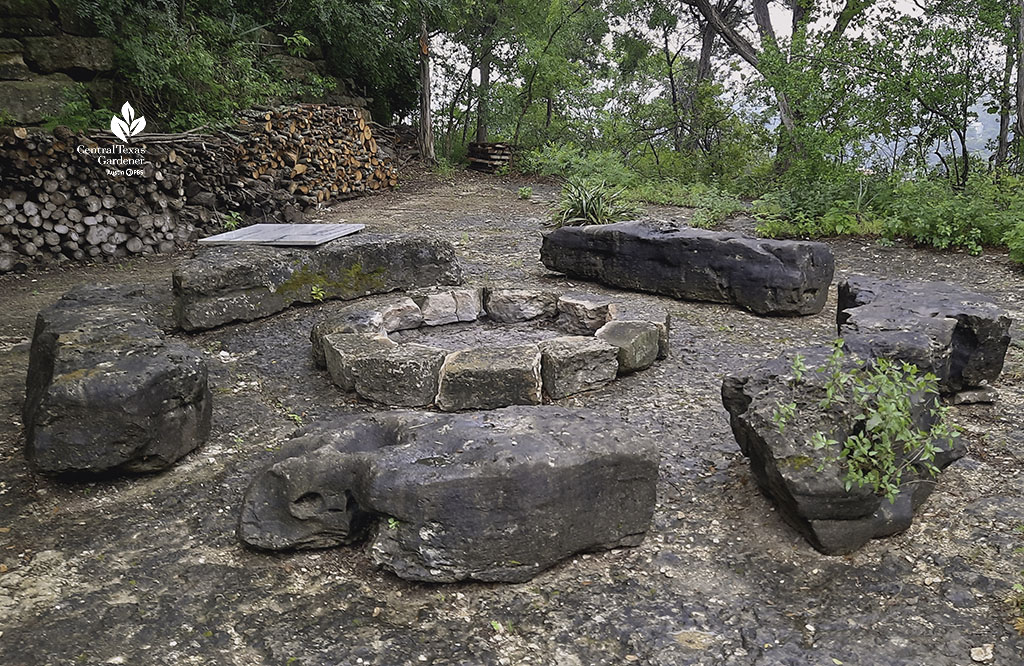
Plants seed with abandon in their stony substrate, including native twistleaf yucca and flameleaf sumac.
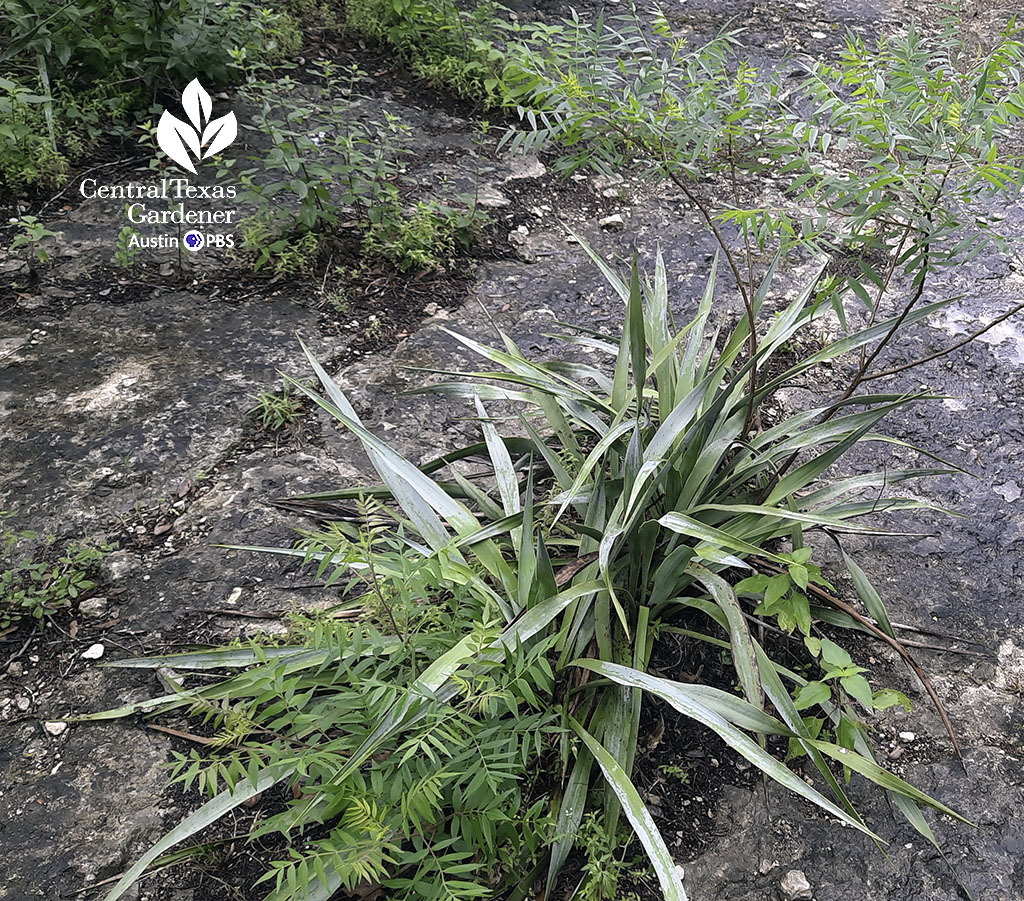
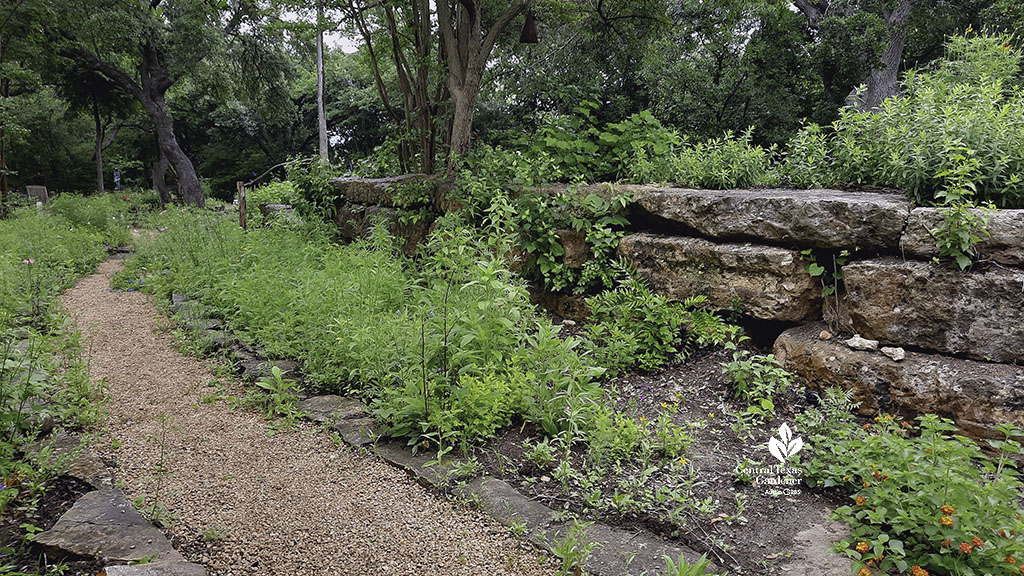
White mistflower/shrubby boneset, lantana, and various shrubs tuck into nooks and crannies.
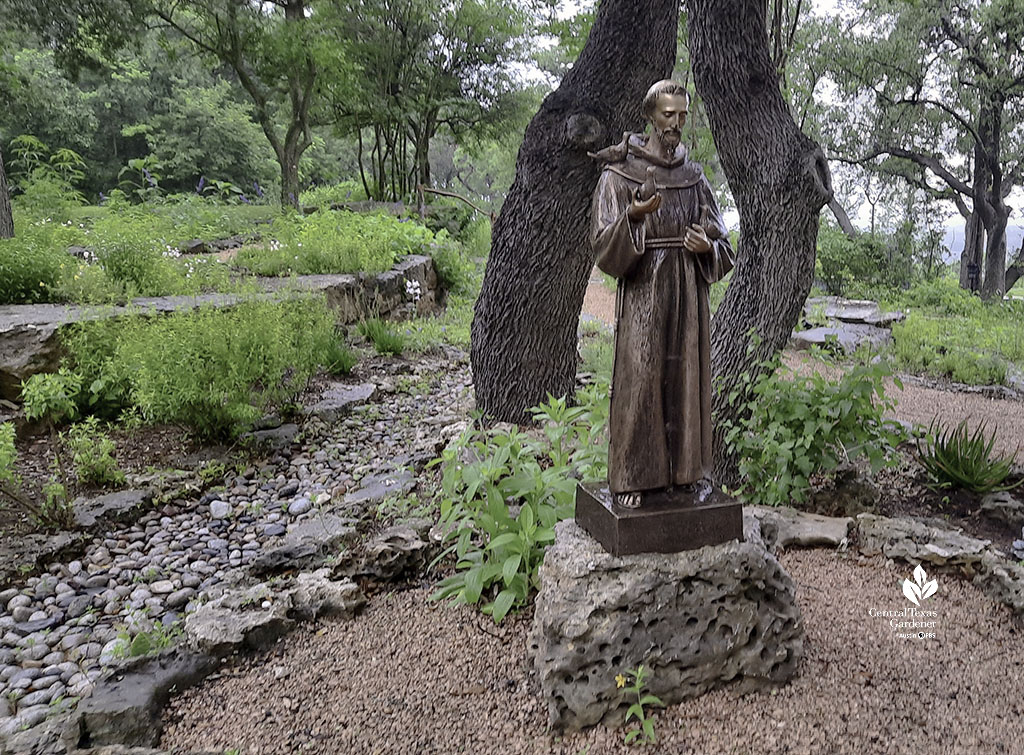
“Of course, there’s the armadillos that come there, our neighbors, so we live with them even though they dig holes and dig out plants we just planted,” James laughed. “But they’re our neighbors, so we live with them.”
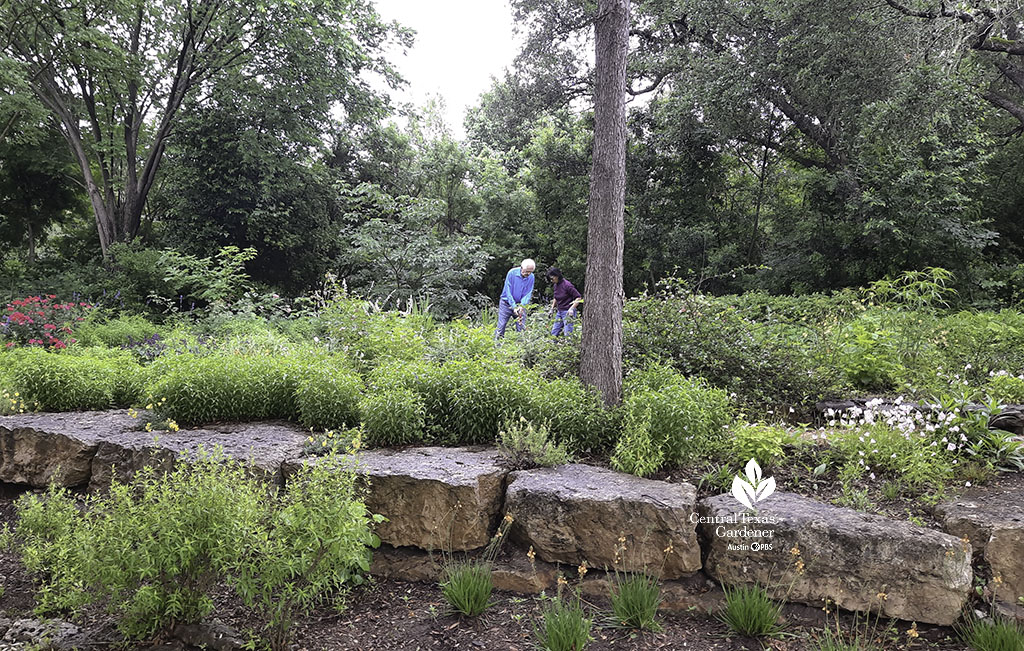
From the start, it made sense to him to layer and terrace for different natural habitats. Gardener Nida joins him in the upper garden.
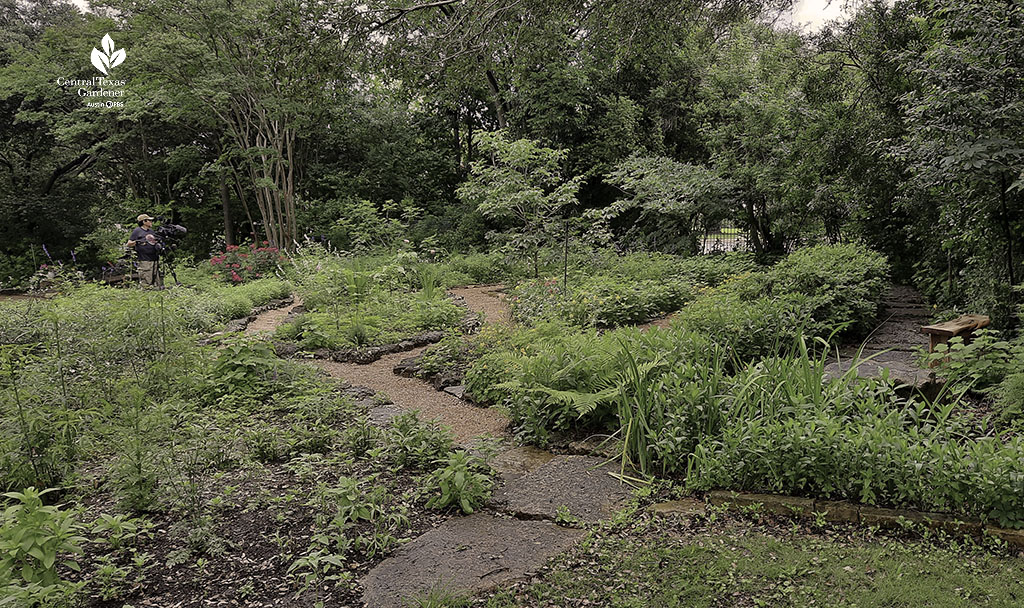
Even on a cloudy day, director Ed Fuentes spotted bees and even a few lazy butterflies.
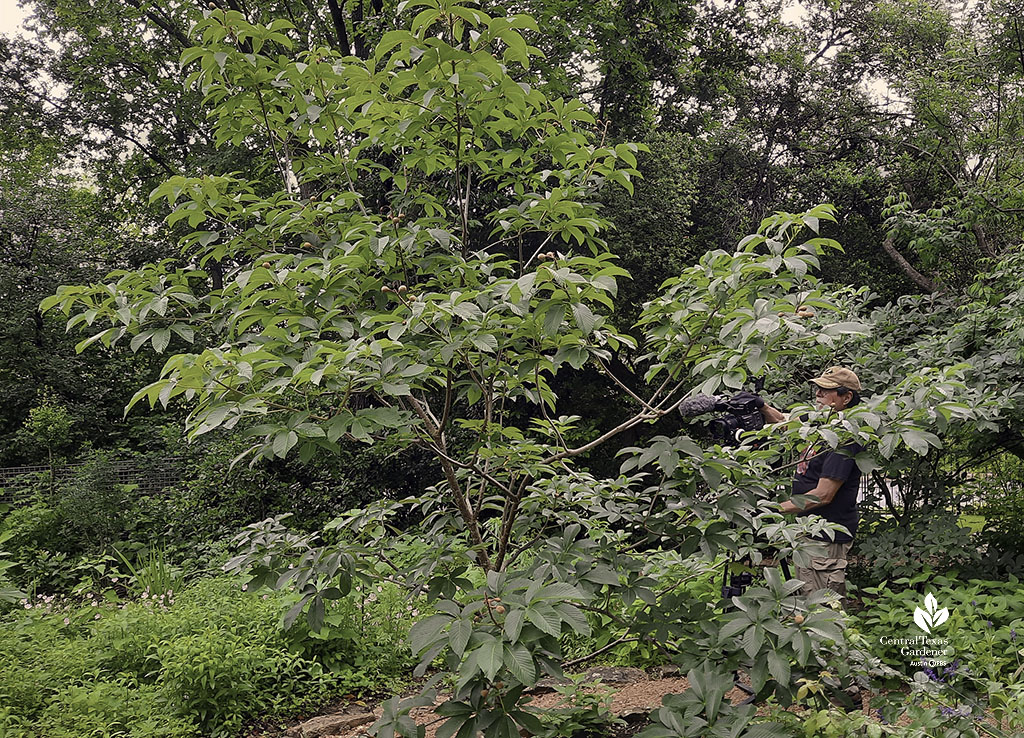
Native red buckeye (also called scarlet buckeye), is one of James’s favorite small trees. Named for its early spring flowers geared for hummingbirds and bees, rock squirrels cherish the seeds that they cleverly replant for him.
Note: I planted one in a part shade area. They are very slow growing, and tend to lose their leaves in summer. No reason to panic, as I did the first year!
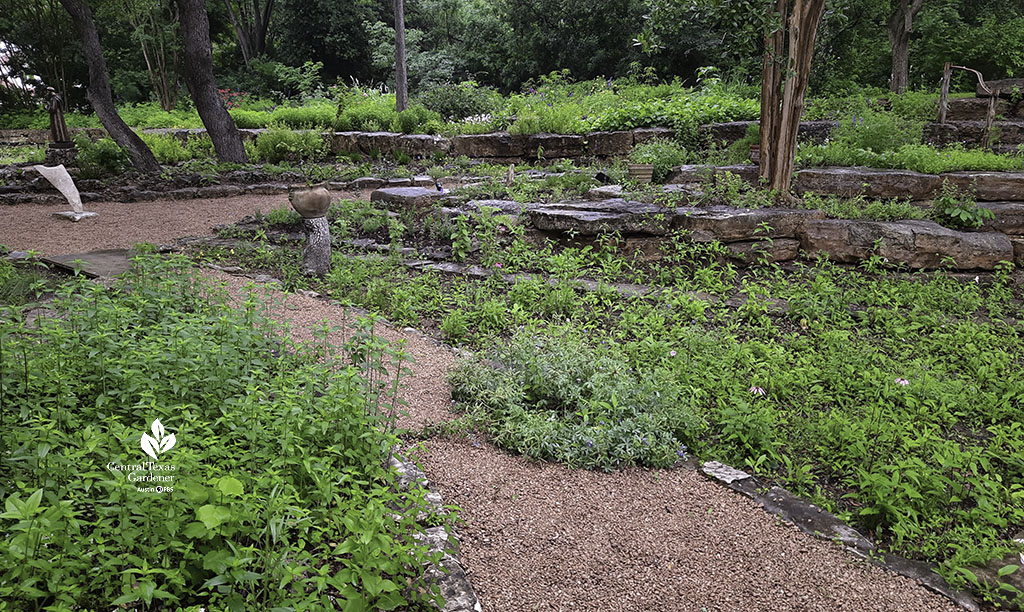
James installed an underground 36,000-gallon ferrocement rain collection cistern to capture rainwater to mitigate downhill flooding and to irrigate.
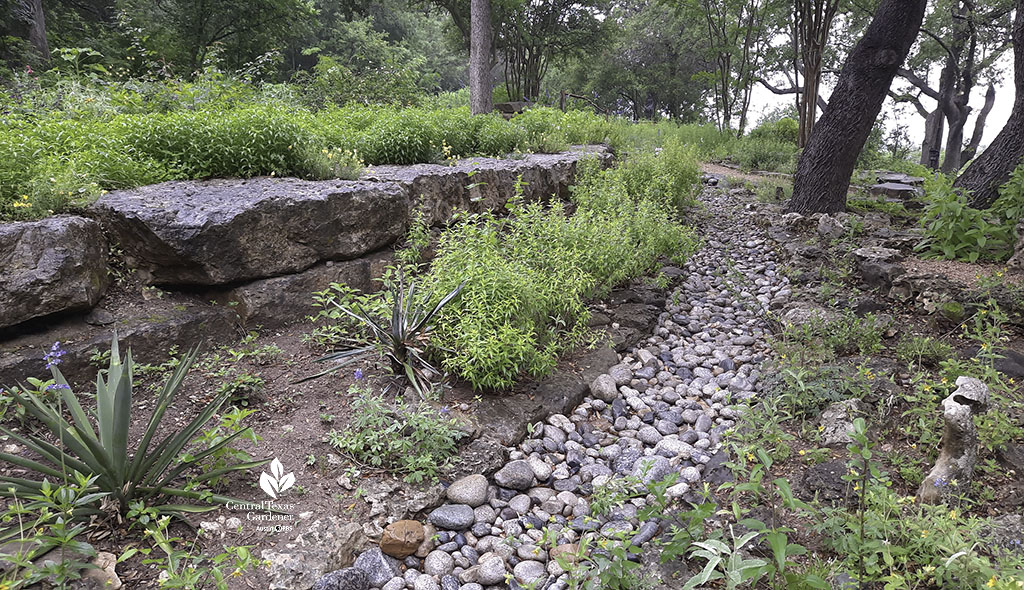
Then he engineered a dry creek bed to infiltrate rainwater as it moves downward.
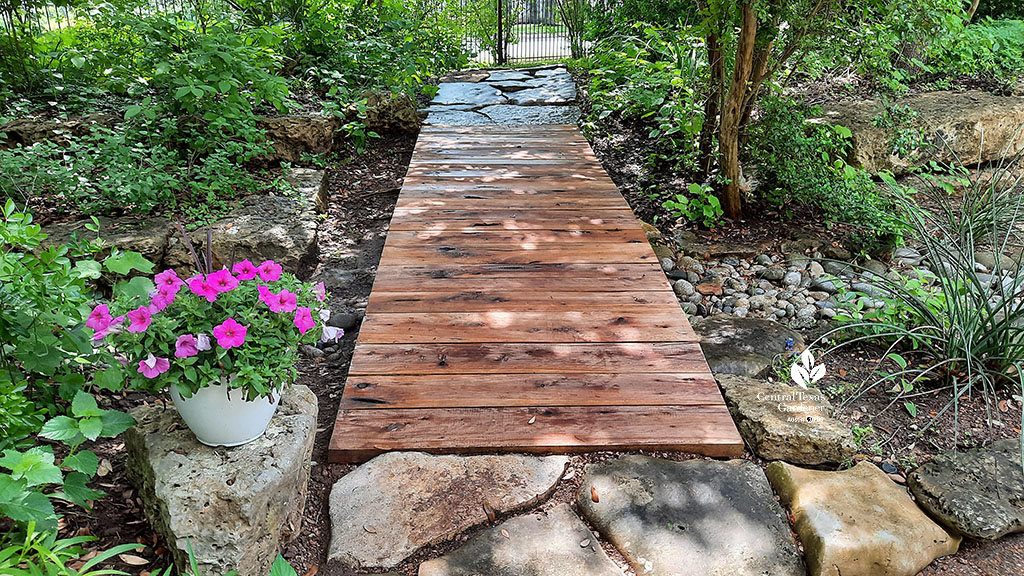
David Stalker worked with wood’s natural grains to bridge the dry creek for entrance access.
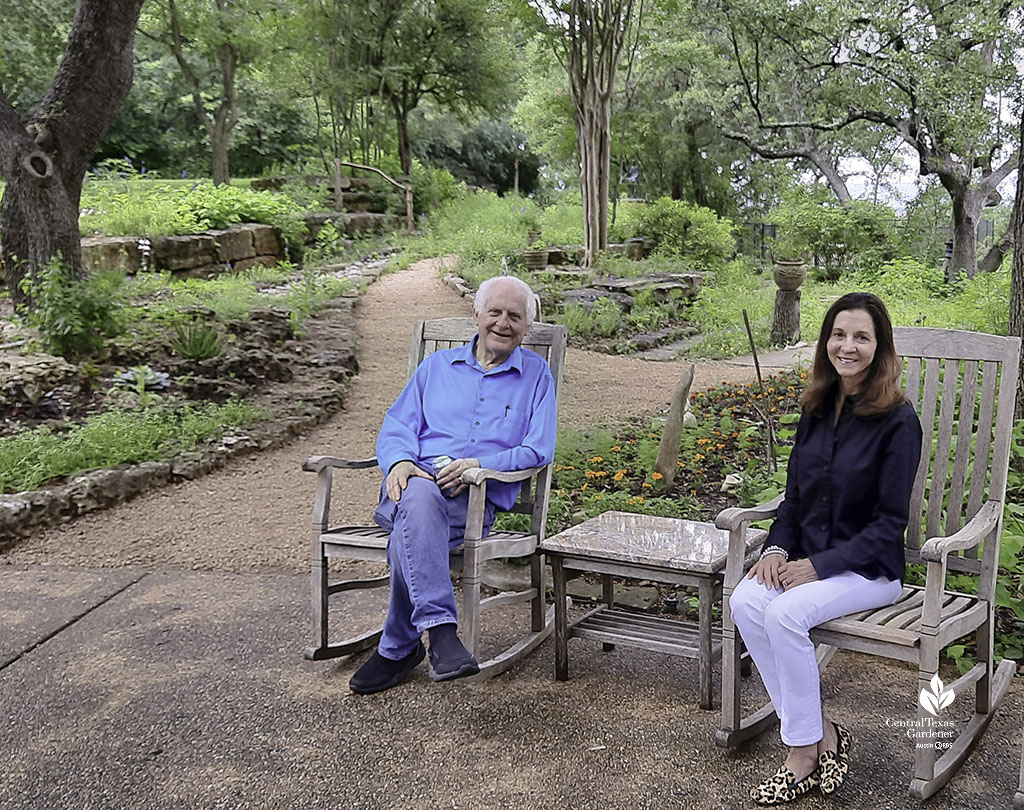
Every day is truly a walk in the woods for James, wife Marci, and their adventurous grandchildren. As James would say, “Let the world turn on its own for a while.”
Watch his story now!
Thanks for stopping by! See you next week, Linda

